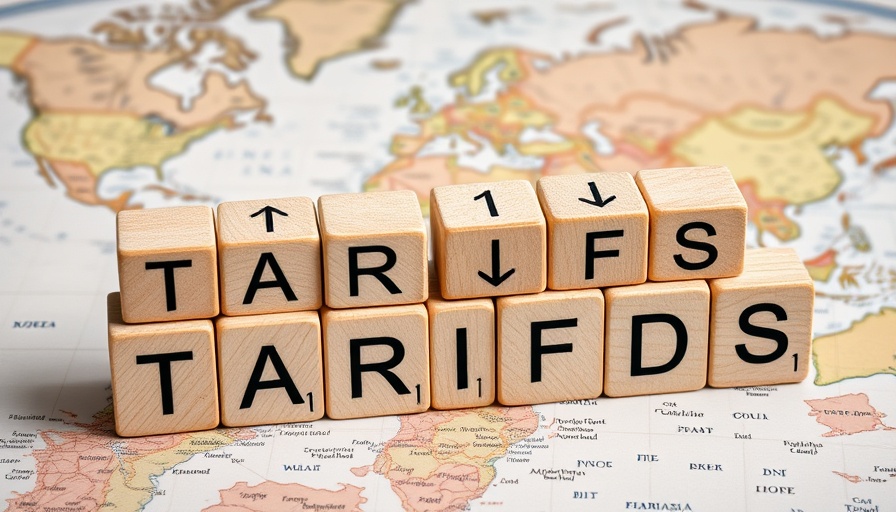
Unpacking Price Increases: Navigating Tariff Challenges in Retail
The retail landscape has undergone a significant transformation in recent years, particularly as merchants face the ongoing challenge of tariff-driven price increases. As import taxes fluctuate unpredictably, businesses must navigate these turbulent waters with diligence and transparent communication. Here's how six distinctive brands are tackling this obstacle head-on.
The Tariff Tidal Wave: Impact on Retail Merchants
The imposition of tariffs on goods imported into the U.S. has placed many retailers in a difficult position. The rollercoaster journey of varying tax rates—rising, falling, and then rising again—has created uncertainty within the retail industry. Mark Carson, CEO of Fat Brain Toys, acknowledges this reality, stating, "We’re really just trying to recoup some of the costs.” Facing the challenge directly, Fat Brain Toys has raised prices on approximately 85% of their products, making it clear to consumers that price increases are a direct result of tariffs.
Transparency: The Key to Consumer Trust
Several merchants have opted for transparency in their pricing strategies, believing that open communication can foster trust and loyalty among consumers. Fat Brain Toys has taken this approach seriously, illustrating the price increases in detail on their website. Their product pages feature explicit information about how much each item’s price has risen due to tariffs, helping customers understand why they are paying more.
E.l.f., known for its affordability in the cosmetics industry, has also utilized its marketing channels to inform loyal customers about the shift in pricing. Their proactive communication in calling attention to these changes helps to maintain their brand integrity while navigating the volatile market.
Creatively Leveraging Challenges as Opportunities
While not every company opts for loud proclamations regarding price hikes, others like Topdrawer see tariffs as a way to dive deeper into brand identity. Poonam Chitnis, VP of operations at Topdrawer, explains, “Instead of chasing the lowest cost workaround, we chose to see it as a design constraint.” This philosophy encourages the company to embrace the challenge, integrating higher costs into a narrative that enhances their brand’s mission and connects with consumers.
Countering Consumer Backlash: When Silence Isn't Golden
On the other end of the spectrum, some brands have opted for silence, believing that avoiding conversations about tariffs may shield them from backlash. However, this strategy raises questions about customer perception and loyalty. In a market where transparency reigns supreme, failing to communicate changes in pricing may alienate consumers who feel blindsided by sudden price changes.
Future Insights: Navigating Uncertain Waters Ahead
As tariffs remain a pressing issue, we can expect consumers to become increasingly aware of the implications surrounding their purchases. Retailers who choose transparent and authentic dialogues about their pricing strategies will likely retain a competitive edge. We may also see emerging customer acquisition strategies evolve that prioritize the messaging of honesty over quick profitability.
What Retailers Can Learn from These Case Studies
The narrative painted by a handful of retailers provides valuable lessons in handling tariff-induced price increases. Transparent communication, creative innovation, and a willingness to adapt are paramount strategies to not just survive the changing landscape but to thrive within it.
For business owners seeking to understand these dynamics further, particularly those generating $2M to $10M in annual revenue, understanding how others navigate similar challenges can be crucial. It’s essential to embrace adaptable marketing strategies that ensure businesses remain responsive to consumer needs and industry changes.
To stay ahead of the curve, consider evaluating your own branding and customer acquisition strategies through the lens of transparency and adaptability. As the landscape of tariffs continues to shift, seize the opportunity to engage your audience proactively.
 Add Row
Add Row  Add
Add 



Write A Comment